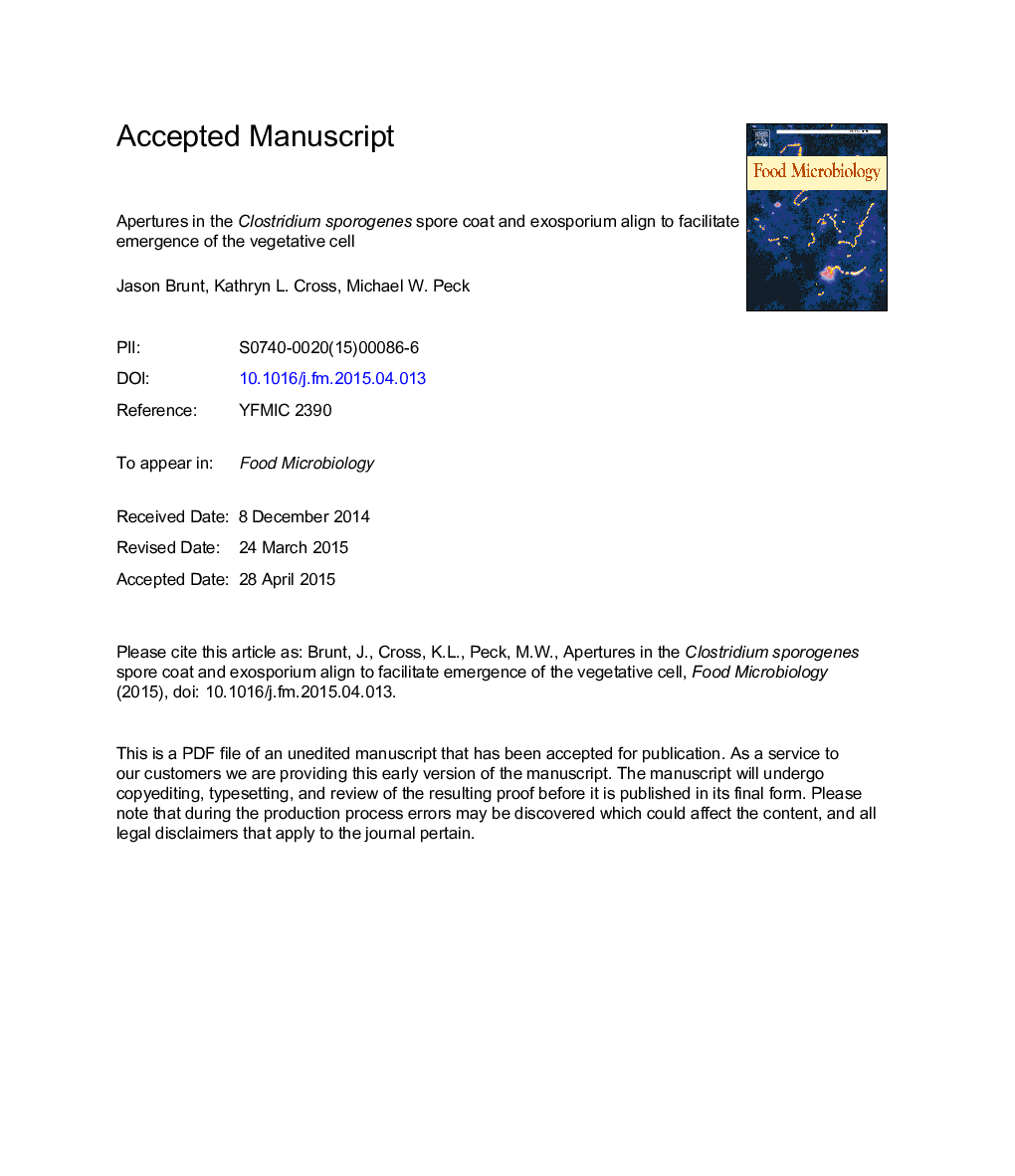| Article ID | Journal | Published Year | Pages | File Type |
|---|---|---|---|---|
| 6288479 | Food Microbiology | 2015 | 21 Pages |
Abstract
Clostridium sporogenes forms highly heat resistant endospores, enabling this bacterium to survive adverse conditions. Subsequently, spores may germinate, giving rise to vegetative cells that multiply and lead to food spoilage. Electron microscopy was used to visualise changes in spore structures during germination, emergence and outgrowth. C. sporogenes spores were surrounded by an exosporium that was oval in shape and typically 3 μm in length. An aperture of 0.3-0.4 μm was observed at one end of the exosporium. The rupture of the spore coats occurs adjacent to the opening in the exosporium. The germinated cell emerges through this hole in the spore coat and then through the pre-existing aperture in the exosporium, before eventually being released, leaving behind a largely intact exosporium with an enlarged aperture (0.7-1.0 μm) and coat shell. The formation of this aperture, its function and its alignment with the spore coat is discussed.
Related Topics
Life Sciences
Agricultural and Biological Sciences
Food Science
Authors
Jason Brunt, Kathryn L. Cross, Michael W. Peck,
